Our History
Phase I: Whole Schools Project
(1991-1998)
In 1996, Mississippi State University was commissioned by Mississippi Arts Commission (MAC) and Mississippi Alliance for Arts Education (MAAE) to conduct a survey on the status of arts instruction in Mississippi public schools that revealed the poverty of arts instruction in Mississippi schools. Among the findings: one full-time music teacher for every 840 students, including high school band programs; one full-time visual art teacher for every 3,150 students; one full-time drama teacher for every 17,848 students; and one full-time dance teacher for every 31,235 students. Research conducted more recently revealed that, in 1999, the ratios of arts teachers to students remain little changed.
Phase II: Whole Schools Initiative
(1998-2019)
- Elementary, middle and high schools now participate
- Elementary/middle models geographically located – Delta, North, Central, South
- Individual programs are driven by a five-year strategic plan
- Two essential components:
- the use of arts teachers and visiting artists in the areas of dance, drama, music, visual art, creative writing and folk arts to strengthen the place of the arts as a core academic subject in its own right
- the integration of the arts in all academic subjects in order to increase student success in these subjects
- Support available to schools: program director, grant funds, technical assistance (strategic planning, grant writing, etc.), mentoring (field advisors, senior schools), resources, and sequential professional development (summer institutes and retreats)
- Comprehensive project evaluation through a national assessment team
- Specialized training for administrators, Mississippi artists, field advisors, etc.
Phase III: Mississippi Whole Schools
(2019 – present)
- Guided by revised 5-year strategic plan
- Name change from Whole Schools Initiative to Mississippi Whole Schools
- Expanded opportunities for non-member schools to participate in professional development
- Increased focus on data collection, analysis and sharing with schools
- New website making resources readily available to member schools and non-member schools
- Educational Video Series available on-demand to member schools
- Revision of tools for monitoring growth in arts integration and working toward sustainability of the program







